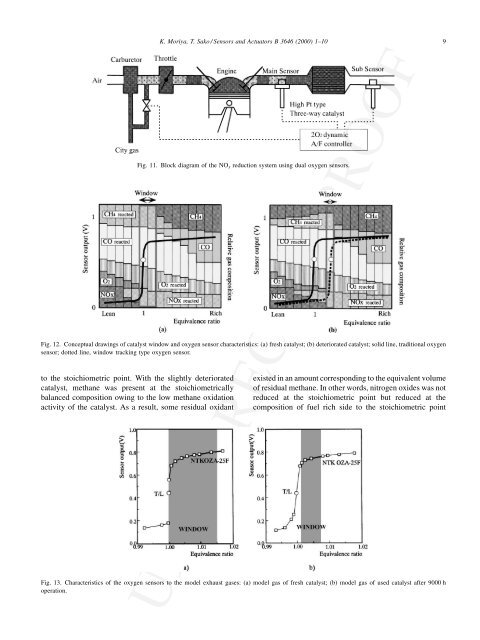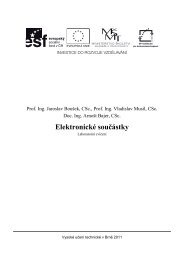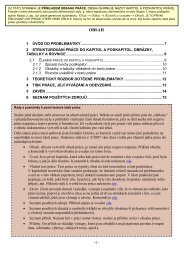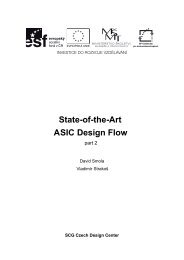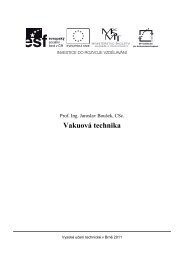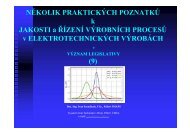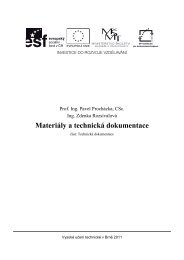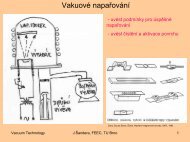Oxygen sensor monitoring a deterioration of a three-way ... - UMEL
Oxygen sensor monitoring a deterioration of a three-way ... - UMEL
Oxygen sensor monitoring a deterioration of a three-way ... - UMEL
You also want an ePaper? Increase the reach of your titles
YUMPU automatically turns print PDFs into web optimized ePapers that Google loves.
to the stoichiometric point. With the slightly deteriorated<br />
catalyst, methane was present at the stoichiometrically<br />
balanced composition owing to the low methane oxidation<br />
activity <strong>of</strong> the catalyst. As a result, some residual oxidant<br />
K. Moriya, T. Sako / Sensors and Actuators B 3646 (2000) 1–10 9<br />
Fig. 11. Block diagram <strong>of</strong> the NO x reduction system using dual oxygen <strong>sensor</strong>s.<br />
Fig. 12. Conceptual drawings <strong>of</strong> catalyst window and oxygen <strong>sensor</strong> characteristics: (a) fresh catalyst; (b) deteriorated catalyst; solid line, traditional oxygen<br />
<strong>sensor</strong>; dotted line, window tracking type oxygen <strong>sensor</strong>.<br />
existed in an amount corresponding to the equivalent volume<br />
<strong>of</strong> residual methane. In other words, nitrogen oxides was not<br />
reduced at the stoichiometric point but reduced at the<br />
composition <strong>of</strong> fuel rich side to the stoichiometric point<br />
Fig. 13. Characteristics <strong>of</strong> the oxygen <strong>sensor</strong>s to the model exhaust gases: (a) model gas <strong>of</strong> fresh catalyst; (b) model gas <strong>of</strong> used catalyst after 9000 h<br />
operation.<br />
UNCORRECTED PROOF


